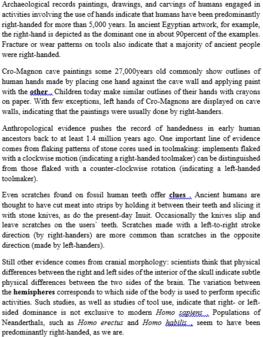Read the following passage and mark the letter A, B, C or D on your answer sheet to indicate the correct answer to each of the questions from 38 to 42.
Today’s cars are smaller, safer, cleaner and more economical than their predecessors, but the car of the future will be far more pollution-free than those on the road today. Several new types of automobile engines have already been developed that run on alternative sources of power, such as electricity, compressed natural gas, methanol, steam, hydrogen, propane. Electricity, however, is the only zero-emission option presently available.
Although electric vehicles will not be truly practical until a powerful, compact battery or another dependable source of current is available, transportation expects foresee a new assortment of electric vehicles entering everyday life: shorter-range commuter electric cars, three-wheeled neighborhood cars, electric deliver vans, bikes, and trolleys.
As automakers work to develop practical electric vehicles, urban planners and utility engineers are focusing on infrastructure systems to support and make the best use of the new cars. Public charging facilities will need to be as common as today’s gas stations. Public parking spots on the street or in commercial lots will need to be equipped with devices that allow drivers to charge their batteries while they stop, dine, or attend a concert. To encourage the use of electric vehicles, the most convenient parking in transportation centers might be reserved for electric cars.
Planners foresee electric shuttle buses, trains and neighborhood vehicles all meeting at transit centers that would have facilities for charging and renting. Commuters will be able to rent a variety of electric cars to suit their needs: light trucks, one-person three-wheelers, small cars, or electric/gasoline hybrid cars for longer trips, which is no doubt take place on automated freeways capable of handling five times number of vehicles that can be carried by a freeway today.
It can be inferred from the passage that ___________ .
A. the present electric engines are the best option as being practical.
B. electricity is the best alternative source of power as it is almost free of pollution.
C. many new types C. of practical electric engines have been developed.
D. the present cars are more economical than their future generation.



Đáp án B.
Thông tin nằm ở: “Electricity, however, is the only zero-emission option presently available.”
Dịch nghĩa: Có thể được suy ra từ bài văn rằng __________.
A. những động cơ điện hiện nay là sự lựa chọn tốt nhất nếu thực tiễn.
B. điện là nguồn năng lượng thay thế tốt nhất vì nó không gây ô nhiễm.
C. rất nhiều loại động cơ điện thực tiễn mới đã được phát triển.
D. xe ô tô hiện nay tiết kiệm hơn thế hệ tương lai của chúng.